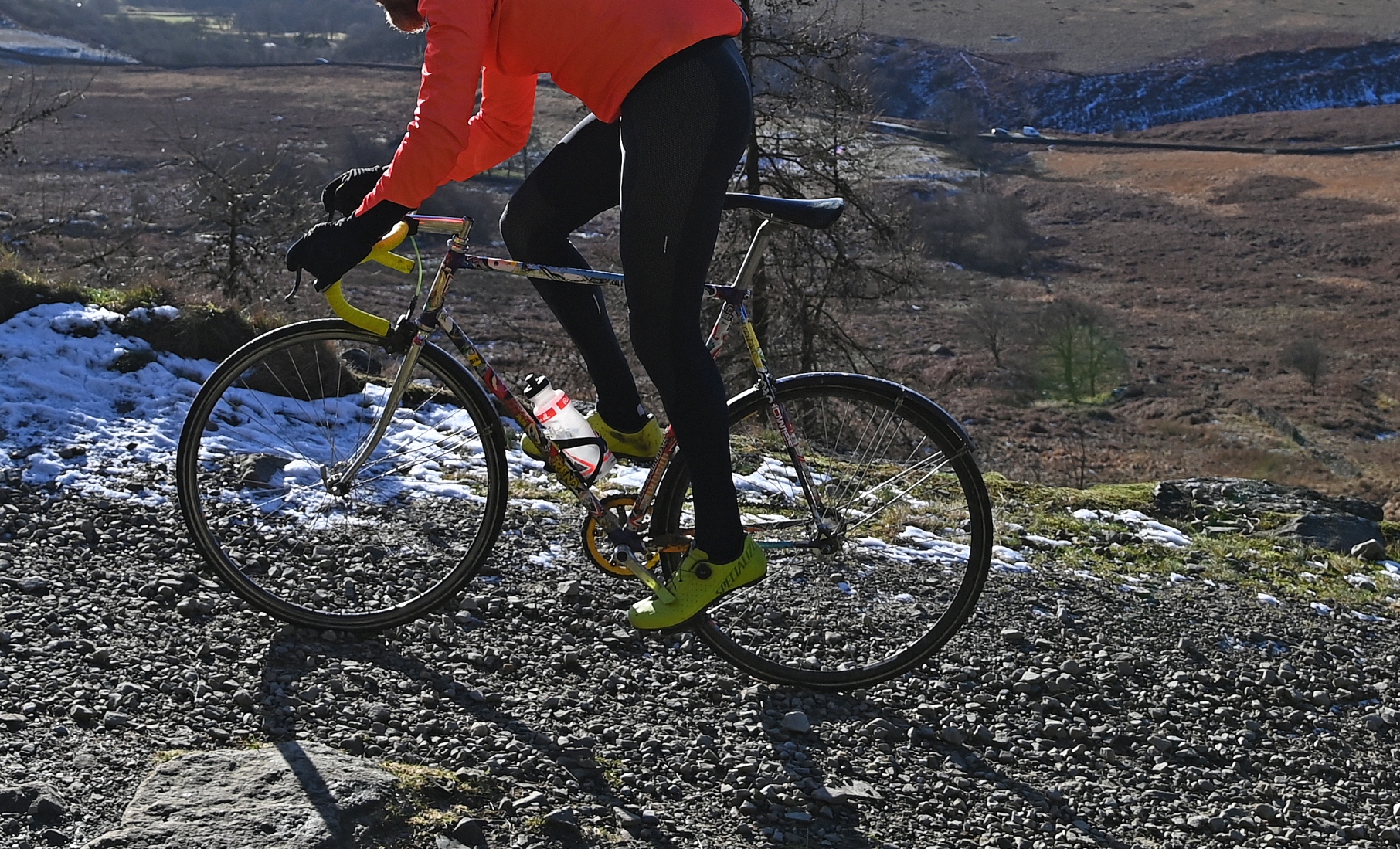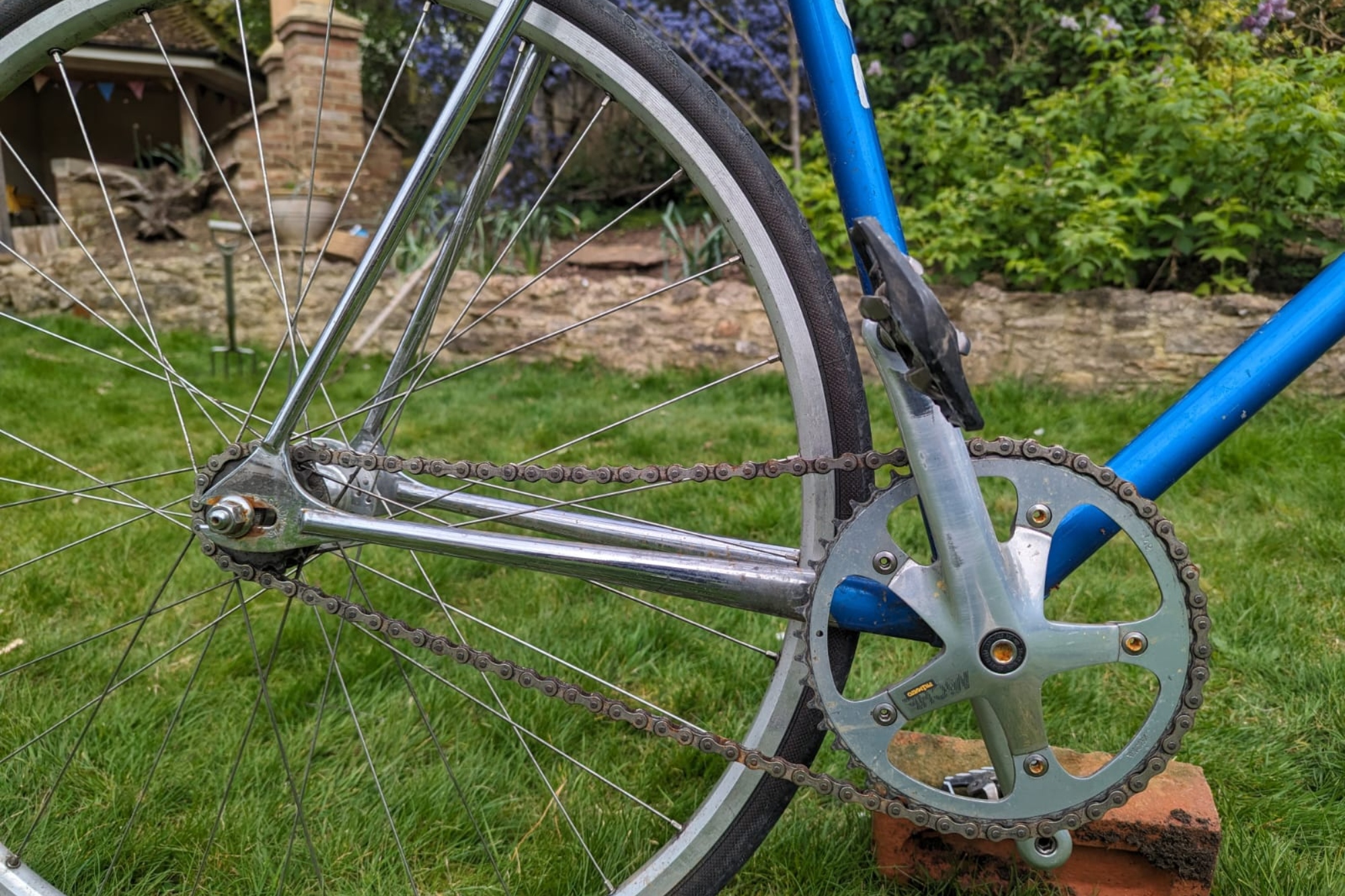A steel fixed-gear machine is the only bike you’ll ever need – here’s why
In a world of readily available carbon-frame bikes with 12-speed cassettes and compact cranks that allow you to spin up your local monster hill at your preferred cadence, why would you opt to ride a steel fixed -gear bike? Allow me to convince you...

A quick definition: A fixed-gear bicycle (or fixie), like the very first safety bicycles introduced in 1885 by John Kemp Starley in Coventry, England, is the simplest and, some (like me) would argue, the purest form of the bicycle.
A fixie has a direct drivetrain in which a single chainring is connected by a chain to a single sprocket without a ratchet system. This means that the bicycle has a single gear that turns the drive wheel in sync with the pedals without the option of freewheeling (a pernicious habit in any case). If you’re moving forward, your pedals are turning. No exceptions.
And why are they so great? Let me explain...
They're low maintenance and reliable
The pared-down simplicity of a fixie means they need very little regular maintenance. Aside from an annual check-up (you can’t be silly), you just have to pump the tyres and lube the chain.
Fixies generally run a 1/8” chain, chainring and sprocket, so there’s just more metal to soak up any wear and tear. A fixie will take a lot of neglect (not recommended) before it stops working altogether.
The mechanical simplicity of a fixie also translates into reliability – with no derailers and attendant cables and shifters, there’s just very little to go wrong. And with no option for shifting gears, there’s also zero chance of dropping a chain.
The wheels of a fixie are bolted on. ‘So, how do you fix a flat on the road without a quick release or thru-axle?’ I hear you say. A quick release or thru-axle is obviously more convenient when a tyre goes squirrelly on you, but carrying a 15 mm spanner becomes second nature as much as packing an extra tube or bomb on long geared rides. And some are just gorgeous, like the Campagnolo ‘peanut butter’ track spanner.
The latest race content, interviews, features, reviews and expert buying guides, direct to your inbox!
They're lightweight and efficient
Fixies tend to be lighter than comparable geared bikes because they’re missing a lot of the usual parts: derailers, gear shifters, a chainring, a brake caliper and brake cable (if you’re running a front brake only, as per UK law), gear cables and a bit of chain. This can trim 1 to 1.5kg from your bike, a weight saving that will cost you this side of an arm and a leg to achieve on a geared carbon bike. My 1980s steel-frame fixie tips the scales at just north of 8kg, which is not to be sniffed at.
Lighter weight offers you increased efficiency, as any hill climber will tell you, but the single-speed setup itself increases efficiency. The single gear means that the chain line is always dead straight, so you’re not losing any energy to friction from cross-chaining. Nor are you losing energy from running the chain through two derailers and the accompanying jockey wheels.
As a result, fixies are amazingly responsive, and they’re quiet, like a call for volunteers at a Parent Teacher Association meeting.
They're cost effective

A fixie doesn't require many replacement parts over the years
Fixies are pretty darn cheap. You can splash out on a Cinelli Vigorelli for over a grand, but you can also pick up a decent fixie for less than the restaurant bill on Valentine’s Day. And the money you spend will get you more bike for your buck than a geared equivalent.
Thanks to their mechanical simplicity, buying second hand is a really viable option. The rise in popularity of single-speeds in the 2010s, followed swiftly by the COVID bike boom, means that online classified sites are awash with pre-loved options from brands like Fuji, Quella, On-One, Genesis and more.
Or (and this is where I find the greatest satisfaction) you can build your own bike. Starting with a decent track/fixie frame or a road frame with horizontal dropouts (usually older steel-frame bikes), you can build a fixie with very little effort and fewer parts, provided one of those is a rear wheel with a track or flip-flop hub.
And fixies just scream for customisation, especially if you’re building one up from scratch, which brings me to the next point.
They're beautiful
The bike industry is moving inexorably towards making bicycles as ‘clean’ as possible, mostly by introducing internal cable routing, which is a great idea until you have to replace a brake cable/hose. A fixie built up from a track bike frame, for example, doesn’t even have bottle bosses, which is about as aesthetically clean as a bike gets (and why God made hydration packs).
Whether they’re joined by beautiful cast lugs, fillet brazing that’s as smooth as a carbon monocoque or Taiwan’s neat TIG welding, steel frames have an innate elegance in their slim steel tubes silhouetted in the double diamond of the traditional bike frame. And you can build on this spare aesthetic by assembling a fixie from your own parts bin, your local bike shop or eBay; or you can find a unicorn Cinelli Lazer frame (or equivalent) and build it up with deep-section Zipps and drip it with Chris King hubs, Paul brakes and a SRAM Omnium crank (the holy grail).
A steel-frame fixie becomes a canvas for self-expression, but it also connects you to some wonderful cycling traditions.
They've got their own culture

Fixie culture is rooted in the messenger scene
Fixie culture is rooted in the bike messengers and couriers of 1980s New York. They weren’t the first to do it – bike messengers have been plying their trade since the safety bicycle was invented – but they were the first to make it cool. When a few riders rolled their track bikes off the velodrome and onto the streets, they sparked a cycling culture that has grown from energetic vocation into unsanctioned urban alleycat races and now the Red Hook Crit series.
Riding fixed-gear bikes on city streets, it seems, has a much broader appeal than fast deliveries. And there’s definitely an affinity with that sort of lifestyle when you swing a leg over a fixie.
Riding fixed introduces adversity which is a joy to overcome
Henri Degrange, founder of the Tour de France, said, ‘Isn't it better to triumph by the strength of your muscles than by the artifice of technology? We are becoming weak. ... As for me, give me a fixed gear!’ This is the same man who said his ideal Tour would be completed by only one rider, so take his masochistic views with a pinch of salt, but he highlights a common trait among cyclists – we like to suffer. And a fixie offers more than ample opportunities for doing so.
(A certain type of) cycling is about enduring pain for as long as you can, or at least longer than the rider next to you. But while beating your buddy Clint on your weekly club ride is a victory of sorts, it’s beating yourself that really counts – riding a faster time, climbing a local hill a touch quicker, pushing a few k’s further when your quads are screaming. It’s why cyclists are drawn to apps like Strava so much.
Although it’s uncomfortable, riding fixed is great exercise. You are never really in the ‘right’ gear, so you’re always compensating by pushing harder up the hills or spinning faster on the flats and descents than you would on a geared bike. And you can never stop pedalling, so there’s no real rest. This means that you gain strength and fitness quite quickly.
Why do I ride a fixie?

Pete's own fixie, with luggage from his 1300km ride to Inverness
While riding a fixie is perhaps the pinnacle of cycling masochism, it’s a pinnacle built on the deep foundations of ego.
Cycling is a pretty honest sport when you get down to it. If you don’t put in the time in the saddle, you don’t get the results. There is great satisfaction in beating your cycling buddies on the weekend club ride or setting a new personal best, but there is perhaps even more in doing so on a bicycle that strips away the ‘buying speed’ aspect of cycling – ‘the artifice of technology’ so despised by Henri Desgranges. The simpler the bike, the closer you get to pure human effort, and the more the ego is stroked.
Riding a fixie is about simplicity, efficiency, cost-effectiveness, aesthetics, culture and suffering. But there’s a lot to be said for the exhilaration of pumping up a hill on a fixie past a rider on a bike that costs as much as a small family car. Or the look on a person’s face when you tell them that you rode 1300 km to Inverness. On a fixie (yes, I did that).
Aside from riding bikes as a kid and teenager, I got into cycling when a previous boss asked if anyone wanted to ride the Cape Town Cycle Tour. Out of 250ish people, I was the only one to put up my hand, and what a great time we had. Her penchant for vintage bikes became mine, and my wife was suddenly saddled with my N+1 steel-frame-bicycle problem, which she hasn’t managed to shake just yet. I love coffee, provided it’s decaf (Heresy, I know!), and I’ll never wear a helmet without a casquette.
You must confirm your public display name before commenting
Please logout and then login again, you will then be prompted to enter your display name.